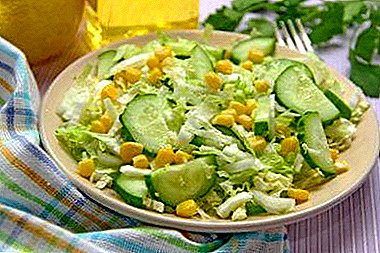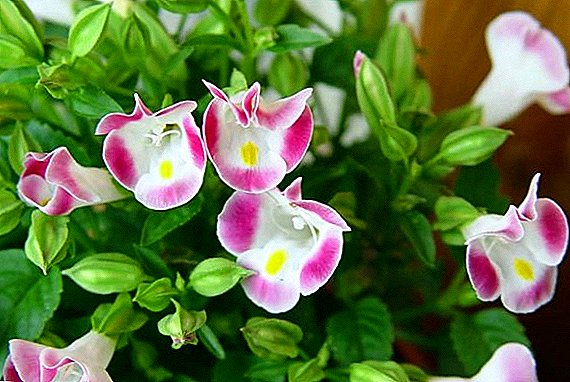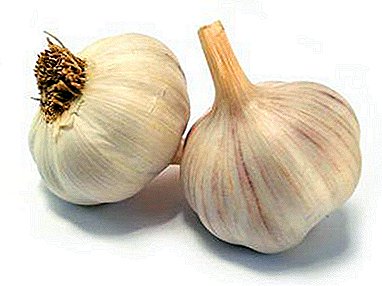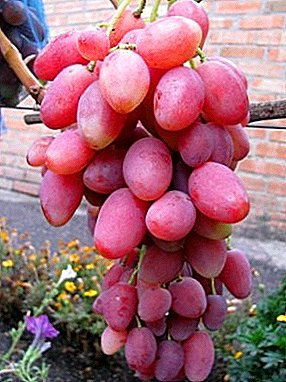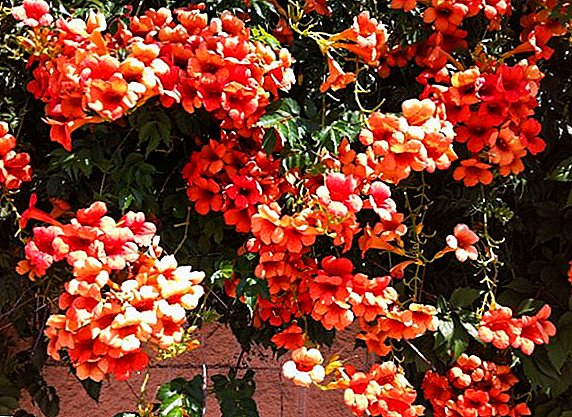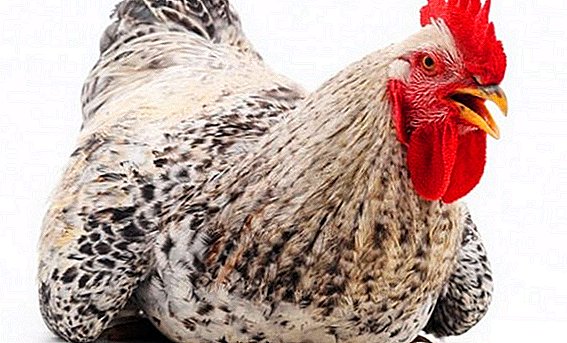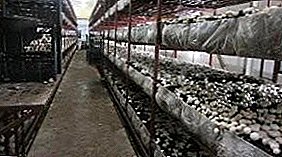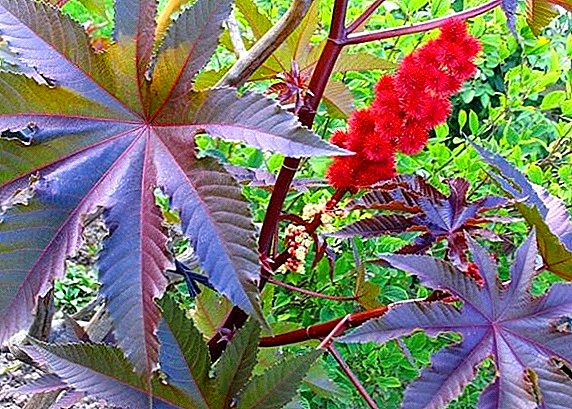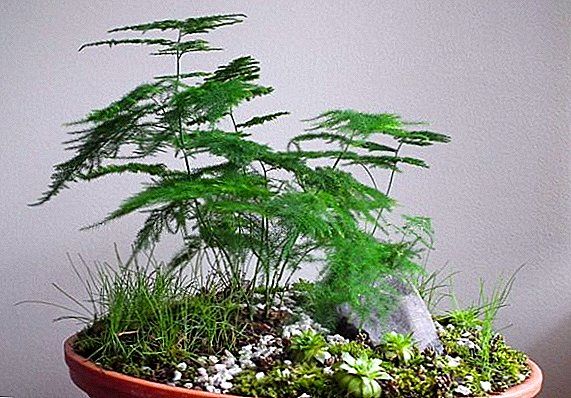 Asparagus Cirrus - an unpretentious flower with specific leaves, giving it lightness and airiness. This plant is universal, it is widely used in landscape design, but due to its decorative and openwork look, it is most often found in floristics. Despite its unpretentiousness, let's see how it is still necessary to care for asparagus at home.
Asparagus Cirrus - an unpretentious flower with specific leaves, giving it lightness and airiness. This plant is universal, it is widely used in landscape design, but due to its decorative and openwork look, it is most often found in floristics. Despite its unpretentiousness, let's see how it is still necessary to care for asparagus at home.
Description
Asparagus feathery (lat. Asparagus plumosus) - a long-term low shrub of the Asparagaceae family.  Growing area: tropical and subtropical forests of South and East Africa.
Growing area: tropical and subtropical forests of South and East Africa.
In addition to the asparagus of the feathery, tropical indoor plants also include: creepers, alocasia, aglaonema, indoor grapes, tillandia, gloriosa, hypoestes, philodendron, dracaena and cordilina.Root: tuberiform with forks.
Stems: thin, flexible, reaching a length of 1.5 m, erect at the young and branching - at the mature plant, light green color. 
Shoots (phylloclades): flattened, metelkovidny education, needle, reaching a length of 15 mm.
Flowers: same-sex and bisexual, small, bell-shaped, growing in inflorescences, white.
Berries: small, red, when ripe, acquire a dark blue (black) color, contain 1-3 seeds. 
Important! Asparagus can not be grown in children's and school premises or rooms with pets - the berries of this plant are poisonous.
Landing
A necessary and important component of the planting of asparagus cirrus is the preparation of the soil. The selected container can be filled with purchased universal soil or special soil for ferns. And you can prepare the soil mixture yourself. There are two options for the mixture:
- mix in the same proportions of greenhouse and garden land with river sand;
- mix in the same proportions of garden and leaf land with river sand.

 Growing asparagus from seeds at home - labour intensive, but quite an effective process, requiring some physical costs and patience. Purchased or self-collected seeds from ripened asparagus berries need to be soaked in water 48 hours before planting and put into a weak (pink) solution of potassium permanganate for 15 minutes before planting to disinfect for 15 minutes.
Growing asparagus from seeds at home - labour intensive, but quite an effective process, requiring some physical costs and patience. Purchased or self-collected seeds from ripened asparagus berries need to be soaked in water 48 hours before planting and put into a weak (pink) solution of potassium permanganate for 15 minutes before planting to disinfect for 15 minutes.Treated seeds are placed in a container and sprinkled with a thin layer of soil. From above, the landing should be moistened with an atomizer. To avoid erosion of soil and seeds, direct watering should be avoided.  To create a uniform humidity, a container with seeds on top must be covered with a film or glass, periodically opening crops to ventilate and remove excess moisture from the shelter.
To create a uniform humidity, a container with seeds on top must be covered with a film or glass, periodically opening crops to ventilate and remove excess moisture from the shelter.
The first shoots of the flower appear no earlier than a month (3-6 weeks). When the seedlings reach 10-15 cm in height, their dive into separate containers becomes available, and after 3-4 months the transplanting of the seedlings takes place in permanent containers. 
Did you know? Asparagus seeds have a very dense shell, but gently puncturing each seed with a needle, without damaging the embryo, the germination period can be accelerated.Seeding time - end of January or the beginning of February.
Breeding
Propagation of asparagus cirrus can be performed by cutting or dividing the bush.
Cuttings - not the fastest breeding option, because the roots of the cuttings develop slowly and the process of vegetation lasts a long time.  For such reproduction, healthy shoots are cut into cuttings of at least 15 cm and placed in the moist soil of a prepared container. To accelerate germination, the plant must provide greenhouse conditions by covering the planting with a film or plastic / glass container.
For such reproduction, healthy shoots are cut into cuttings of at least 15 cm and placed in the moist soil of a prepared container. To accelerate germination, the plant must provide greenhouse conditions by covering the planting with a film or plastic / glass container.
Under the conditions created, it is important to air the greenhouse daily, opening it for a short time. Reproduction time cuttings should fall on March - June.
Shrub dividing is the easiest and fastest way to grow asparagus. Reproduction by division is carried out during transplantation of the main plant. Part of the root system is separated from the main plant, along with the shoots.  The root of the separated plant is desirable. process natural growth promoters ("Radifarm", "Appin") and place in a prepared container with moistened soil.
The root of the separated plant is desirable. process natural growth promoters ("Radifarm", "Appin") and place in a prepared container with moistened soil.
Important! It is not recommended to treat only transplanted flower with fertilizers. Places of slices or damage to the root system during transplantation may be burned by the drugs, which will adversely affect the subsequent growth of asparagus.
Care
Timely and proper care for asparagus cirrus at home ensures the well-being of the plant, beautiful appearance and a long period of vegetation. Quality care means keeping conditions, timely watering, the need for additional feeding and periodic plant transplantation. 
Conditions (temperature, air humidity, soil, etc.)
A flower growing in indoor conditions requires certain conditions for its development.
Illumination of the room - One of the most important requirements for conditions of detention.
Asparagus does not tolerate dark, poorly lit rooms and lack of light for long periods. Also disastrous for him will be direct sunlight. When ensuring the conditions it is important to adhere to the optimum ratio of light and shade. It is best to grow in the depths of the room close to the windows or to the eastern and western windowsills of the shaded windows. 
Did you know? Asparagus, due to its volatile compounds, has phytoncidal properties. It cleans the air and absorbs salts of heavy metals entering the room from the proximity of highways.Optimum asparagus temperature in summer time - no higher than +25 ° С, in winter - no less than +12 ° С.
One of the important components of care for asparagus at home is maintaining optimal moisture. The flower prefers high humidity, so in dry weather in summer or when heating is turned on in winter, it needs to provide regular moistening. It can be done in several ways:
- spray from the spray: in the winter season - 2 times a day, in the summer season - 1 time a day;
- place containers with water near the flower pot;
- Place a flowerpot with a flower on a wet-pebble pan.
 Monthly loosening of the soil will help to improve the soil structure and saturate it with sufficient oxygen. In order not to damage the root tubers, loosening should be done shallowly and gently against the vessel walls.
Monthly loosening of the soil will help to improve the soil structure and saturate it with sufficient oxygen. In order not to damage the root tubers, loosening should be done shallowly and gently against the vessel walls.Important! In case of violation of the above conditions of maintenance, asparagus shoots turn yellow, dry out and subsequently crumble.
Watering
The plant loves wet soil, but does not tolerate overflow. It is necessary to water a flower copiously, making a break for drying the soil. After 20-30 minutes after watering, excess water from the pan must be drained. If the flower is contained in wet conditions (climate), then watering requires more moderate. A young plant in the period of active growth requires more abundant watering. In winter, watering should be somewhat reduced, but it should be renewed in February already. At this time, the growing process is activated and young shoots begin to appear. Irrigation frequency - no more than 2-3 times a week. 

Top dressing
During the period of active development at home, care for the asparagus flower also implies periodic and constant application of fertilizing with organic and mineral fertilizers. Top dressing is done in this mode:
- in the summer season - no more than once every two weeks;
- in winter season - no more than once a month.
Did you know? Fertilization in a moist soil immediately after watering has the greatest effect on the plant.

As a fertilizer for asparagus, any complex fertilizer for indoor plants (for example, Kemira, Radifarm, Fertika Lux) will be suitable.
Often this plant suffers from a lack of calcium in the soil. Symptoms of such a deficit are considered to be darkening and deformation of the shoots and stunting of the plant.
In such cases, growers recommend watering asparagus. running water from the tap. Such water in its composition contains many calcium salts and helps the plant to cope with a deficiency of this mineral.  To ensure an attractive appearance of the shoots and a beautiful light green color, once a week it is recommended to add to the sprayer to moisten the plant. growth stimulator "Bud" (in the ratio of 1 g of the drug to 1 liter of water).
To ensure an attractive appearance of the shoots and a beautiful light green color, once a week it is recommended to add to the sprayer to moisten the plant. growth stimulator "Bud" (in the ratio of 1 g of the drug to 1 liter of water).
Read about proper care for asparagus at home.
Pruning
Asparagus stems form in an underground kidney and this stage of formation takes quite a long time. This feature of the plant does not imply any pruning of the stems. The trimmed stem of the asparagus plumose stops its development and growth, which entails a long period of formation of new stems.
As an exception, asparagus shoots for reproduction at home or already yellowed and dried stems are subject to pruning. Also pruned stems and shoots damaged by pests and diseases. 

It is desirable to perform pruning only in early spring during transplantation. Such actions will bring minimal harm to the plant.
Transfer
The root system of asparagus expands over time, and the pot becomes cramped. For this reason, the flower requires periodic transplanting into a larger pot.
Did you know? In nontraditional Chinese medicine, asparagus root is used in the treatment of diseases of the respiratory system (lungs), as a stimulator of the nervous system, and as a preparation of antitoxic effects.

The young plant needs to be transplanted into a spacious pot in a year. Mature plants are transplanted 1 time in 2-3 years. The soil for transplanting should consist of a mixture of sand, garden soil and humus. For more active growth of plants need to use the soil for ferns, bought in any garden shop. It is necessary to make transplantation in the early spring in such sequence:
- a layer of expanded clay is poured at the bottom of the pot to prevent stagnation of moisture and rotting of the root system;
- on a layer of expanded clay poured a small layer of earth mixture;
- the roots of the plant extracted from the old pot are cut a little, too long shoots are cut;
- placing asparagus in a new pot, all voids are filled with a dense layer of earth mixture;
- at the end of the transplant, the soil is moderately moistened;
- a week later, fertilizing is made with organic, mineral or complex fertilizers (urea, superphosphates, potash salt).


Important! The tuberiform root of asparagus raises the level of the soil as it grows, therefore with each subsequent transplant the level of the soil should be slightly lower than the previous one.
Diseases and pests
In addition to providing high-quality care at home, all conditions must be created for asparagus cirrus. Usually, asparagus rarely gets sick, but under the wrong conditions can be affected by such diseases:
- gray rot - an infectious disease, manifested by a dark gray fluffy patina on the stems and shoots. The appearance of gray rot contributes to the constant excessive moisture. For treatment use a solution Bordeaux fluid (copper oxychloride);

- root rot - a fungal disease, manifested in the withering of the upper part of the plant and rotting, followed by the death of the underground part of the plant. The emergence of root rot is facilitated by frequent waterlogging of the soil, the absence of a drainage layer in the pot, or an overabundance of organic fertilizers in the soil. Unfortunately, it will not be possible to save the diseased flower.
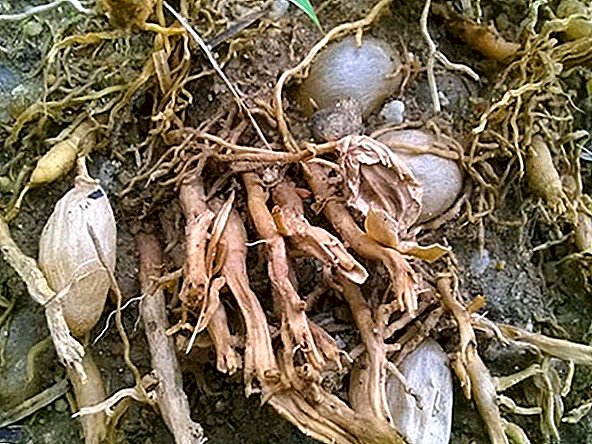
- thrips are small insects that feed on sap plants. Their appearance is indicated by the yellowing and deformation of the leaves and the appearance of small black dots on the stems;

- shchitovka - small insects that feed on sap plants. Signs of manifestation, like thrips, are yellowing and drying of the leaves, followed by the death of the plant;
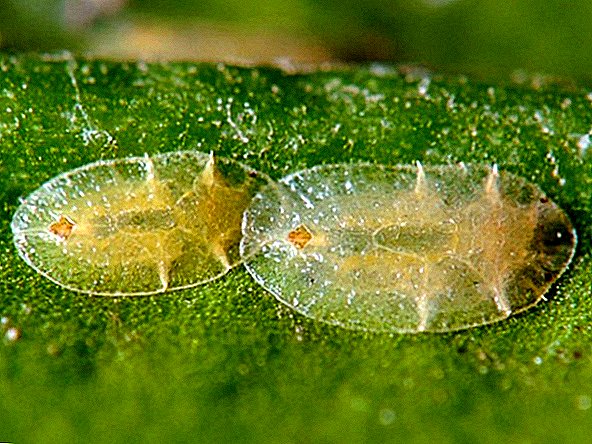
- the scarlet is a small insect (resembles a shield). It feeds on plant sap, slows its growth and leads to death. Manifested by the appearance of whitish plaque, resembling cotton;
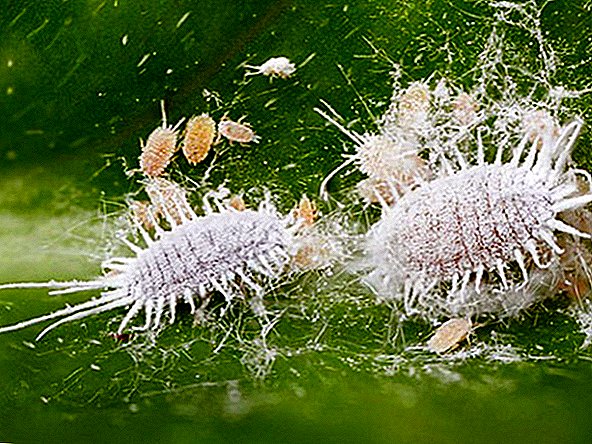
- spider mite is a small insect that feeds on leaves and stems. Manifested by the appearance of a small transparent web on the flower and a slight (but constantly increasing) yellowing of the leaves;

- Aphid - small insects that feed on sap plants. Signs of the appearance of aphids: discoloration, deformation of the leaves with their subsequent drying and death of the plant.
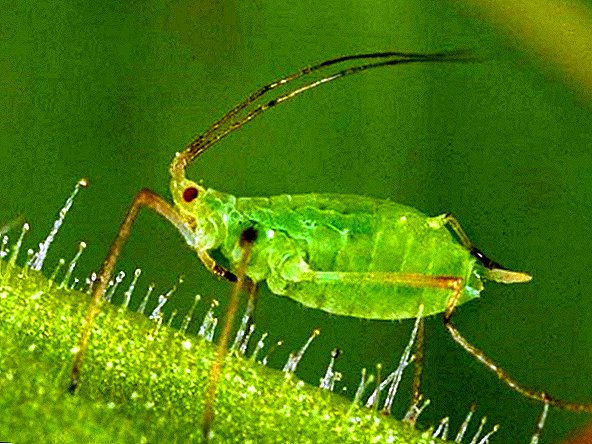
With a strong defeat plants to deal with pests will only help chemical substances (insecticides): "Agravertin", "Basudin", "Detsis", "Green Soap", "Confidor", "Talstar", "Fitoverm", "Etisso" and others. 
Important! Asparagus Cirrus responds poorly to treatment with insecticides, therefore preventing the appearance of pests is the best way out.
An attractive plant with thin, graceful stems and delicate shoots is asparagus is feathery. The main qualities of asparagus can rightly be called low maintenance and ease of reproduction. Due to such characteristics, this plant is increasingly found in flower pots in apartments and office buildings. Also, it can often be seen in floristics with the design of bouquets and landscape design.









